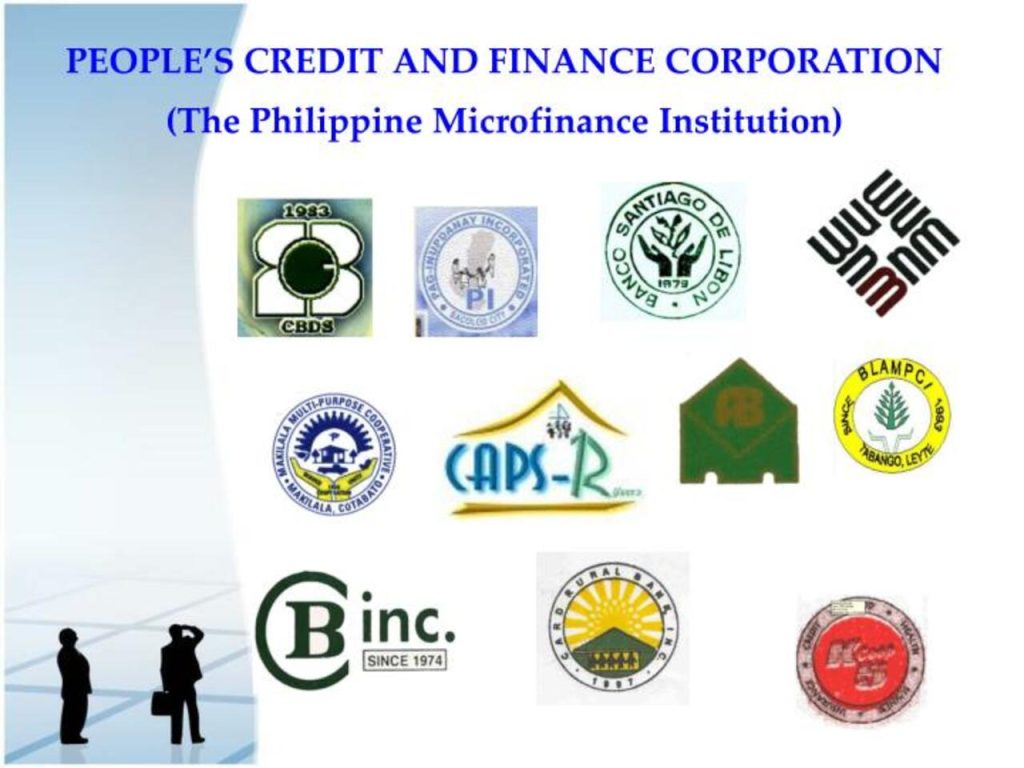The People’s Credit and Finance Corporation (PCFC) is a government-owned and controlled corporation (GOCC) in the Philippines that provides microfinance services to low-income and marginalized sectors. Created to address the lack of access to affordable credit among the poor, PCFC serves as a financial bridge that empowers Filipinos to start or expand small businesses and improve their livelihoods. Its programs are designed to promote inclusive growth by supporting micro-entrepreneurs through partnerships with microfinance institutions nationwide.
Understanding the role and impact of PCFC is essential, especially in a country where poverty remains a major challenge. By learning more about how PCFC works, the public can become more aware of the opportunities it offers and how its services contribute to poverty alleviation. It also empowers individuals and communities to take part in sustainable financial practices that promote long-term development and self-reliance. If you are one of these individuals or if you belong to one such community, this article will help you as it contains everything you need to know about PCFC—from its history down to the available programs and services and its contact information in case you need to ask.
What is PCFC?

The PCFC is a GOCC registered under the Securities and Exchange Commission (SEC) in the Philippines. Established under Administrative Order No. 148 in 1994, PCFC was created as a response to the lack of accessible credit options for marginalized Filipinos. Its creation was backed by the Presidential Commission to Fight Poverty and legally mandated through various orders, including Memorandum Order No. 261 and Republic Act No. 8425, also known as the Social Reform and Poverty Alleviation Act.
PCFC comes with a focused mission: to provide microfinance services specifically for the country’s poorest and most financially underserved communities by acting as a conduit for channeling both local and international financial resources toward microfinance programs designed to reduce poverty. It also mobilizes capital and works with Microfinance Institutions (MFIs) that extend microloans to low-income individuals. These loans help fund small-scale businesses, providing a much-needed boost for Filipinos who typically cannot access formal banking services.
Legal and Historical Background
The formation of PCFC was grounded in national legislation aimed at tackling poverty head-on. Administrative Order No. 148 (1994) initiated the creation of the Task Force on Credit for the Poor. This group was charged with reviewing government credit programs for underserved populations and drafting a master plan for what would become PCFC.
Following this, the Presidential Commission to Fight Poverty and the Land Bank of the Philippines were directed to implement the plan. In 1997, Republic Act No. 8425 formalized PCFC’s role as the primary vehicle for delivering microfinance services to impoverished communities.
Capitalization and Funding
To support its operations, PCFC’s authorized capital stock was increased from PHP 100 million to PHP 2 billion, divided into 20 million common shares with a par value of PHP 100 per share. The subscribed capital stock was increased to PHP 600 million, with the national government subscribing the difference of PHP 500 million. The initial paid-up capital was increased to PHP 250 million, with subsequent increases leading to a total of PHP 600 million over four years. These appropriations were sourced from the national government’s share in the earnings of the Philippine Amusement and Gaming Corporation (PAGCOR).
Mission and Vision
PCFC envisions itself as a sustainable leader in providing financial products and services that generate income opportunities and improve the lives of the poor. Its mission centers on delivering microfinance services to alleviate poverty and promote self-sufficiency among low-income Filipinos.
Here we directly quoted their official mission and vision statements:
Vision
“An institution with a social conscience committed to sustainable development through inclusive financing of the enterprising poor.”
Mission
“To establish and administer a sustainable credit financing system for the poor by:
- Mobilizing and generating resources for micro and small enterprises;
- Linking the poor with the formal financial sector; and
- Strengthening the capacities of institutions providing microfinance services.”
Mandate
PCFC is tasked with mobilizing and allocating financial resources from local and international sources. These funds are used exclusively to support microfinance services for the poor. The ultimate goal is to make affordable credit accessible to those who need it most, thereby helping them develop sustainable livelihoods.
Institutional Objectives
PCFC aims to become a viable and sustainable leader in microfinance. It does this by:
- Offering financial products and services that generate income opportunities
- Supporting livelihood projects that uplift poor communities
- Promoting the values of self-reliance and sustainable development
Core Functions
Its main functions include:
- Microfinance Provider: PCFC’s primary function is to provide microcredit loans to various financial partners, including rural banks, cooperative banks, thrift banks, non-government organizations (NGOs), and cooperatives. These partners, in turn, extend financial assistance to marginalized individuals to finance their microbusinesses and other needs.
- Poverty Alleviation: By facilitating access to affordable credit, PCFC aims to alleviate poverty in the Philippines. The corporation promotes self-reliance by enabling the poor to engage in income-generating activities, thereby improving their economic status.
- Resource Mobilization: PCFC is tasked with mobilizing financial resources from both local and international funding sources. These resources are exclusively used for microfinance services targeting the poor, ensuring that financial assistance reaches those who need it most.
Scope and Coverage
PCFC programs are designed to be inclusive. Basic sectors such as women, farmers, fisherfolk, and indigenous peoples are prioritized. Through collaboration with MFIs and other government agencies, it extends its services to meet the unique financial needs of these groups.
Its programs are also specifically designed to give emphasis on reaching vulnerable and underserved areas in the Philippines, such as:
- Rural communities
- Agrarian reform zones
- Remote provinces
- Areas with limited banking services
By focusing on these sectors, PCFC contributes to a more inclusive financial system.
Programs and Services
Some of the programs and services offered by the PCFC are as follows:
1. Financial Assistance Programs
PCFC’s main function is to distribute microcredit loans to financial partners who then extend these funds to individual borrowers. This setup supports various initiatives, including:
- Microenterprise development
- Small-scale livelihood projects
- Financial inclusion for women and rural communities
These loans often feature minimal collateral requirements and are tailored to the repayment capacities of low-income borrowers.
2. Partnership with Microfinance Institutions (MFIs)
Rather than lending directly to individuals, PCFC works through accredited MFIs. These include cooperatives, rural banks, and NGOs with the infrastructure and reach necessary to deliver microfinance services. Through this partnership model, PCFC maximizes its outreach, making its services accessible to a greater number of people, especially in remote rural areas.
3. Microfinance Loan Program
To promote its mandate, PCFC formulated the Microfinance Loan Program. This program is designed to provide:
- Quick access to small loans for income-generating projects
- Flexible repayment terms suited to borrowers’ economic activities
- Lower interest rates compared to traditional lenders
These features make the loan program attractive to small entrepreneurs and low-income earners who are often left out by commercial banks. This program comes in two different types:
- Investment Credit: Short, medium, and long-term loans with tenures ranging from one to seven years.
- Institutional Credit: One-year revolving credit lines via drawdowns.
Regardless of the credit type, the interest rates of the loan programs are set at 12% per annum plus a 1% service charge for investment credit, and 3% per annum plus a 1% service charge for institutional credit. The credit line amount to MFIs is based on evaluation and credit needs. Sub-loans to end borrowers can be up to PHP 150,000.
4. Government Coordination
PCFC does not operate in isolation. It coordinates with other government financial institutions (GFIs) like:
- Land Bank of the Philippines
- Development Bank of the Philippines
- Philippine Postal Bank
- Al Amanah Bank
These institutions are mandated to open special credit windows that complement PCFC’s microfinance programs. Such partnerships allow for a more robust and coordinated national approach to microfinance.
5. Private Partnerships and Collaborations
PCFC also collaborates with private financing institutions to provide savings and credit needs to the poor. Private financing institutions are also encouraged to establish credit windows and other arrangements to promote the microfinance program and support the savings component of the microfinance program.
6. PCFC and the Development Academy of the Philippines (DAP)
Though distinct from the Development Academy of the Philippines (DAP), PCFC aligns with DAP’s broader development goals. DAP focuses on strengthening institutions and promoting sustainable development, while PCFC delivers grassroots-level financial interventions. Together, both institutions contribute to the Philippines’ overarching goal of inclusive development.
Privatization Plans
An interesting aspect of PCFC’s future involves privatization. According to current guidelines, if a majority of PCFC’s voting stock is acquired by qualified private entities such as NGOs, people’s organizations, and cooperatives, the corporation may transition into a privately organized body. Should this happen, new Articles of Incorporation and By-laws must be registered with the Securities and Exchange Commission (SEC) subject to laws and regulations applicable to private corporations.
This shift is designed to broaden PCFC’s impact by leveraging the agility and field presence of non-government stakeholders. However, PCFC will continue its primary purpose of providing savings and credit needs to the poor. The chairman of PCFC may remain a member of the National Anti-Poverty Commission (NAPC) upon privatization.
Video: Committee on Micro, Small, and Medium Enterprises Deliberation Session
The People’s Credit and Finance Corporation is a key component of the Philippines’ financial inclusion and poverty reduction strategy. As a GOCC, PCFC has a targeted mission: to mobilize financial resources for microfinance services meant exclusively for the poor. Through strong partnerships, coordinated government support, and innovative financial solutions, PCFC continues to promote self-reliance and economic development among marginalized communities while at the same time extending meaningful financial assistance to those who need it most. Whether through increasing capital, expanding reach, or partnering with more MFIs, PCFC is, indeed, a powerful instrument for sustainable development, particularly for the most economically disadvantaged Filipinos. To learn more about PCFC and microfinance, watch this video below:
Contact Information
For other questions or concerns, you may contact PCFC via the following:
VP for Operations (Ms. Julie Valdez)
- Tel. No. (632) 899-6221
- Email: info@pcfc.ph
